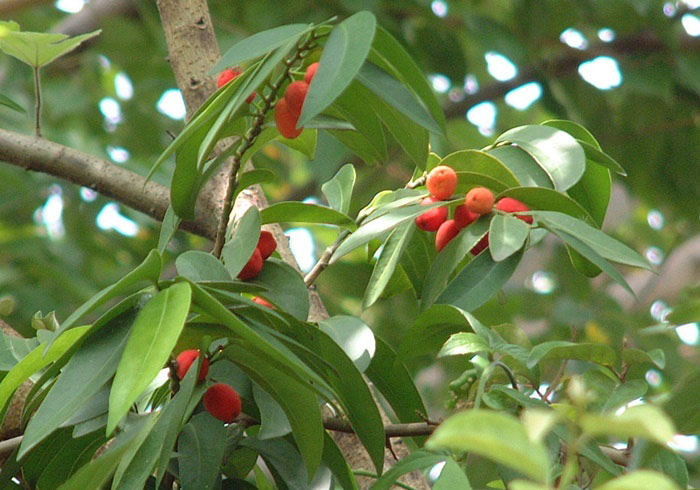Drypetes littoralis
The coastal drypetes is an evergreen small tree, and its slightly sickle-shaped leaves are its most distinctive feature. The Chinese name comes from the fact that these leathery leaves turn a light green color, similar to raw iron, when dried.
In addition to its unique leaves, the fruits of the coastal drypetes, which ripen to a striking orange red, also exhibit remarkable ornamental value. Not only are they visually appealing, but they also attract birds and other animals to feed on them. Due to its exceptional tolerance for salt, strong winds, and poor soil, the coastal drypetes can take root and grow along the coastal frontline. Its dense foliage forms a natural barrier, effectively mitigating the impact of sea winds, stabilizing sandy soil, and preventing coastal erosion. This makes it crucial for maintaining the stability of coastal ecosystems, with coastal windbreak and sand fixation being one of its most important ecological functions. As an integral part of coastal forests, the coastal drypetes provides habitats, shelter, and a vital food source for various coastal animals, thereby contributing to the maintenance of biodiversity in coastal regions.
In terms of ornamental and horticultural applications, its drought-tolerant, salt-tolerant, wind-resistant, and shade-tolerant characteristics make it highly suitable for planting in coastal gardens, parks, or green spaces as a coastal landscape tree species, adding greenery and color to coastal areas. Its unique tree form and sturdy branches also make it a promising material for bonsai art.
The coastal drypetes is limited to the Hengchun Peninsula in southern Taiwan and Orchid Island. It is a typical indicator species of coral reef coastlines and plays an important role in ecological and environmental protection. In the museum it is planted in the Coral Atoll Area, Orchid Island Area, and Littoral Forest Area of the Botanical Garden as a representative plant of the raised coral reef environment.
